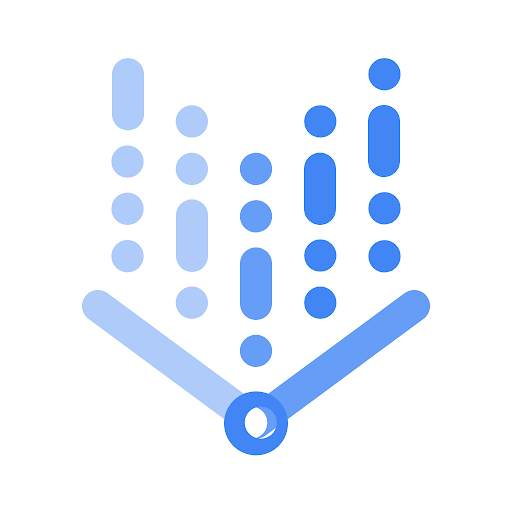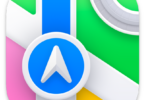The Google Cloud AI Platform team has been creating a unified view of the ML landscape for the past few months. At the Google I/O event, it was launched as Vertex AI. Let’s go through this article to learn about Vertex AI in detail.
What is Vertex AI?
Vertex AI is actually an ML or machine learning platform. It enables you to train machine learning models and artificial intelligence applications. With the help of this platform, you can deploy them also. Besides, customizing LLMs or large language models to use in AI-powered applications is possible with the help of this platform. This platform combines data science, data engineering, and ML engineering workflows and lets your teams use a common toolset to collaborate, along with scaling the applications using Google Cloud’s benefits.
What Does Vertex AI Offer?
Vertex AI can offer many options for model training and deployment:
- AutoML allows you to train text. Also, you are able to train tabular, or video data using it. You don’t even need to write code or prepare data splits in this case.
- You will be capable of getting complete control over the training procedure using custom training. For instance, it provides control over writing your training code. Also you will be able to use a machine learning framework you prefer. In addition, it lets you choose hyperparameter tuning options.
- Model garden allows you to test vertex AI and lets you discover this platform. Besides, you can customize vertex AI using the model garden, which allows you to deploy the platform. Furthermore, it enables you to select open-source models and assets.
- Generative AI lets you access the large generative AI models of Google for several modalities such as code, speech, text, and images. Tuning LLMs of Google is possible in order to fulfill the requirements. After that, you are able to deploy them in your AI-powered applications.
Once you deploy the models, you will be able to use the end-to-end MLOps tools of this platform. Thus, you can automate projects along with scaling them throughout the ML lifecycle. You have to use a fully managed infrastructure to run MLOps tools. Depending on the budget requirements and performance, you are able to customize the infrastructure.
If you want to run the whole ML workflow in Vertex AI Workbench, you have to use the Vertex AI SDK for Python. You should know that Vertex AI Workbench represents a development environment based on Jupyter Notebook. Colab Enterprise is actually a Colaboratory version. It is integrated with Vertex AI. In order to develop your model in this Enterprise, collaborating with the team can be done. Google Cloud Console, the gcloud command line tool, client libraries, and Terraform are some instances of other available interfaces.
Why Do You Use Vertex AI Platform?
It helps to unify the whole workflow from training to deployment. Additionally, it is capable of assisting organizations in boosting AI production. It includes the generative AI models.
Google Cloud’s Vertex AI Pricing:
If you are a new customer, you will get $300 free credits that you can spend on Vertex AI, when you will sign up for the free trial.
Vertex AI And The Machine Learning (ML) Workflow:
In this section, you will see an overview of ML workflow and learn how to use Vertex AI to build and deploy your models.
-
Data Preparation:
As soon as you extract and clean the dataset, you need to perform EDA or exploratory data analysis. Thus, you can understand the characteristics and data schema that the ML model expects. You need to apply data transformations to the model. Additionally, you need to apply feature engineering to the model. Then, it is required to split the data into test sets. Also, the data can be split into training, validation, and test sets.
You are able to explore data and visualize them using Vertex AI Workbench notebooks. When Vertex AI Workbench integrates with Cloud Storage and BigQuery, you will be able to access and process your data more quickly.
You can use Dataproc Serverless Spark to access large datasets from a Vertex AI Workbench notebook. Thus, you can run Spark workloads, and do not need to manage your Dataproc clusters.
-
Model Training:
In order to train a model, you have to choose a training method. You are able to tune this process for performance.
- If you are willing to train a model without writing code, you need to know about AutoML. It is compatible with tabular, image, text, and video data.
- You need to learn about custom training while writing your training code and training the custom models with the help of the machine learning framework you like.
- You should optimize hyperparameters for custom-trained models using custom-tuning jobs.
- In complex ML models, This AI Vizier is able to tune hyperparameters.
- You can train your model using Vertex AI Experiments. In this case, you need to apply various machine-learning techniques. Then, you can compare the outcomes.
-
Model Evaluation And Iteration:
You are able to adjust data along with evaluating the model you have trained depending on evaluation metrics.. Besides, you can iterate on your model.
- Recall and precision are some model evaluation metrics you can use to evaluate model performance. These metrics help to compare model performance. You can generate evaluations via the Model Registry. Otherwise, you can add evaluations in the Vertex AI Pipelines workflow.
-
Model Serving:
You are able to deploy your model to production and get predictions.
- In order to get real-time online predictions, you can use pre-built or custom containers. Thus, you can deploy a custom-trained model.
- You can get Asynchronous batch predictions, which do not need deployment to endpoints.
- You can serve TensorFlow models using optimized TensorFlow runtime at reasonable prices. The latency is lower than open source. It depends on the default TensorFlow Serving containers.
- This AI Feature Store can be used for online serving cases with tabular models. It lets you serve features from a central repository. In addition, you are able to monitor feature health.
- Vertex Explainable AI lets you analyze the contribution of every feature to model prediction. You are also capable of finding mislabeled data from the training dataset using it.
-
Model Monitoring:
Your job here is to monitor the deployed model’s performance. You can now retrain your model using the incoming prediction data to achieve better performance.
This AI model monitoring helps to monitor models for training serving skew as well as prediction drift. Then, it will send you alerts when the incoming prediction data will be skewing too far from the training baseline.
The Bottom Line:
Vertex AI is able to offer a unified platform that is capable of seamlessly integrating data preparation, model training, deployment, as well as monitoring. As a result, the complexity of managing various components & services separately gets reduced.
Frequently Asked Questions
- What is Vertex AI used for?
This platform helps anyone in an organization benefit from AI/ML. For instance, it can be business users who work with AI solutions, or developers who need to build generative AI applications using this AI Agent Builder, or data scientists or ML engineers who need to train and deploy ML models efficiently.
- What are the drawbacks of Vertex AI?
It is unable to detect basic relationships in the data. This is only able to reveal the patterns that the model finds in the data.
- Is It Good?
This platform is simple to use. Besides, it integrates easily with other services. Moreover, vertex AI can be implemented easily.







